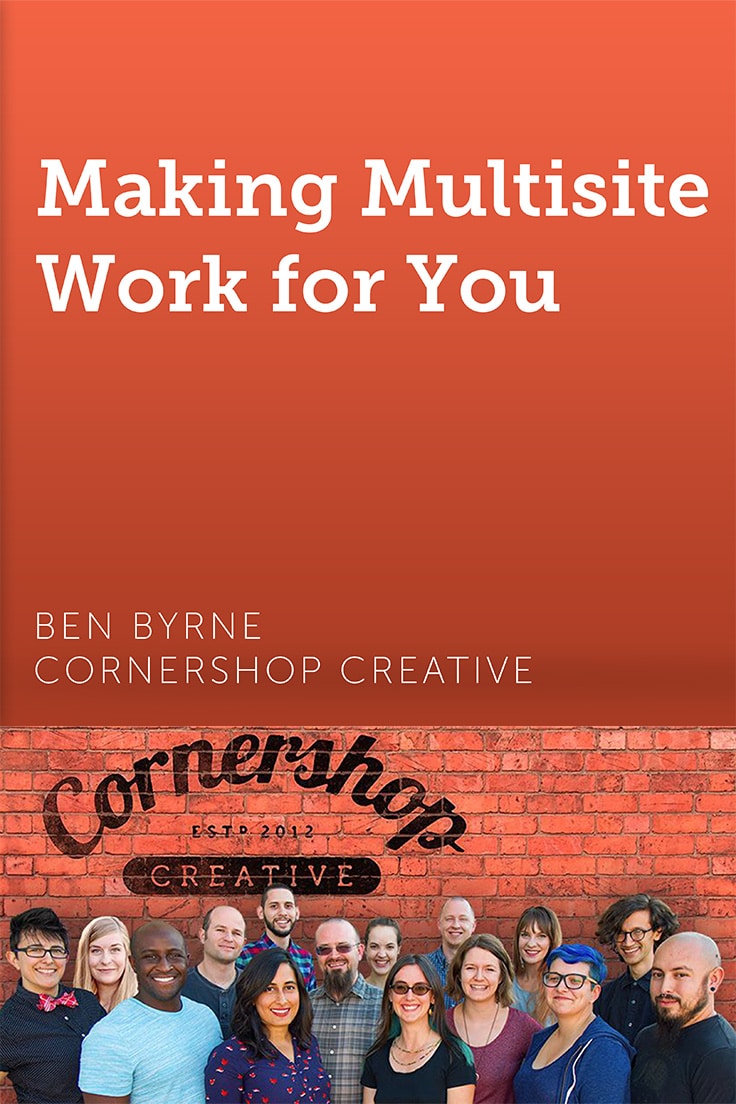Slides
At the May 2017 meetup, Ben Byrne from Cornershop Creative walked us through what WordPress Multisite is, when to use it, when not to use it, and possible drawbacks and gotchas when using Multisite (even as directed). Ben has kindly shared his slides with us.
Multisite East BayOutline
- Multisite Is…
- Good for…
- Bad for…
- Cons
- Enabling Multisite
- URL Handling
- Subdomains only after 30 days
- Open & Closed Networks
- Never build a network without
define( 'DISALLOW_FILE_EDIT', true ); - Network Admin Role
- Shared Users
- Shared Themes & Plugins
- Not all plugins are Multisite compatible
- Sharing content across sites with the Broadcast plugin
- Technical Details
- Network Database Tables
- Per-site Database Tables
- Confusing terms: “Site” and “Blog”
- Ramifications of Multisite code history & terminology
switch_to_blog()is playing with fire- Newer functions in Multisite
About Ben Byrne

Ben Byrne is one of three cofounders of Cornershop Creative, a web services agency that plans, designs, builds and maintains websites — mostly in WordPress — for nonprofit organizations and educational institutions around the country. As Chief Creative Officer, Ben oversees most the design and development work that Cornershop does.
Ben has a BFA in Graphic Design from Iowa State University and has been working on the web professionally for about 20 years. He has presented on the difference between print and web design, web typography, WordPress widgets, high performance front-end performance optimization and other topics at various organizations and events, including several WordCamps.
Twitter: @drywall
Email: ben@byrnecreative.com







Hi Ben, nice slides, thanks for sharing. I have done a couple multisites and I remember one of the tougher parts was doing a multisite homepage that lists featured blog posts from across the network of sites. I remember “switch_to_blog” was a buggy way of doing it. I am curious to know if there is a better way to do that now.